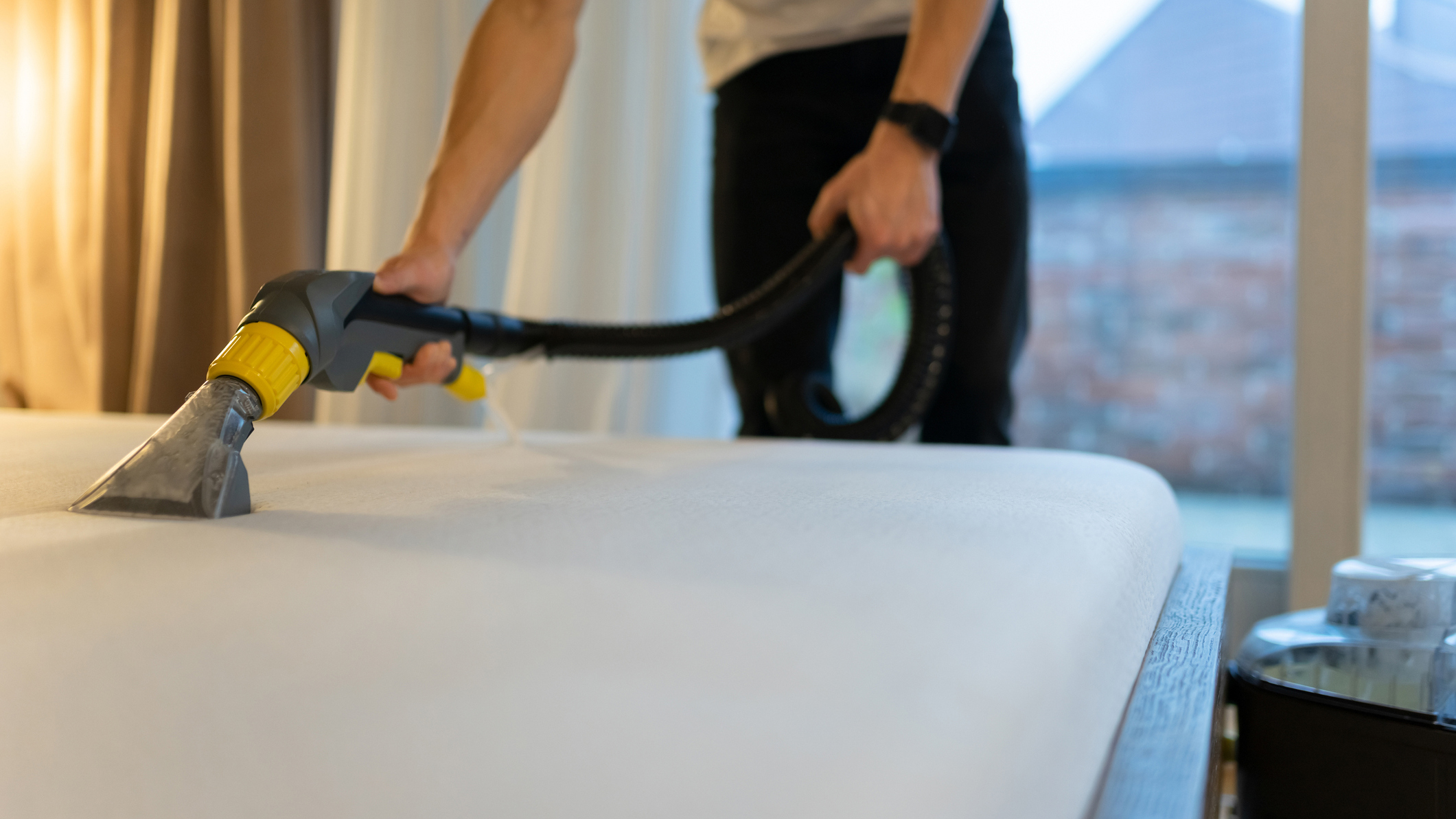How to spot bed bugs on your mattress and prevent them from coming back
Bed bugs leave tell-tale signs on your mattress — here’s how to deal with them

Nobody wants bed bugs in their home, but it’s nothing to be embarrassed about if you do come across them. Despite our natural inclination to run a mile once we notice them in our sleeping space, bed bugs can be dealt with effectively.
Our step-by-step guide will show you how to spot bed bugs on your mattress, along with ways you can get rid of them for good. Know ahead of time that you do need to put in some time and commitment to fully eradicate the problem, but it'll be worth it for your peace of mind and overall quality of sleep.
Not sure which mattress to buy? Our best mattress guide has this year’s top-rated picks across value and premium models. For now, let’s take a closer look at those pesky bed bugs and learn how to clean a mattress and why.
If your biggest issue is a too-soft bed, use our guide to how to make a mattress firmer to fix it fast.
What are bed bugs and why do we get them?
The common bed bug (or cimex lectularius) is a tiny insect of around 5mm (0.2in) in length that feeds on the blood of humans and animals. It has a flat, oval-shaped body and is reddish-brown in color, but because of its size a single bed bug is difficult to see unless it's clustered into a larger group.
Bed bugs are drawn to carbon dioxide and warmth, so a sleeping human is unfortunately an excellent target. They like to hide in the warm crevices of mattresses, box springs and bed frames.
The worst infestations tend to happen in cities where bed bugs can attach to luggage and clothing to move around. The EPA considers bed bugs a public health pest, although they are not known to transmit or spread disease.
Get daily insight, inspiration and deals in your inbox
Sign up for breaking news, reviews, opinion, top tech deals, and more.
How to spot bed bugs on your mattress

If you suspect you have bed bugs, you’ll want to find them as quickly as possible. As you can probably imagine, it’s far easier to deal with a minor infestation than a full-blown one. These critters are one of the reasons why even the best memory foam mattresses decay faster than they should (learn more about how long a memory foam mattress lasts).
For some people, the first sign of bed bugs is bite marks or feeling itchy — typically on the lower half of your body or the warm crevices of your joints. But some people don’t react at all to being bitten by bed bugs, and there are other nasty nuisances that bite such as fleas.
Thus, it's far better to check your mattress for a possible infestation. Look for any of these signs:
- Dark red dots or stains on your sheets: these could be crushed bed bugs or a little of your blood
- Bed bug eggs and eggshells: these tiny (1mm) pale yellow skins are shed by nymphs (baby bed bugs) as they grow larger
- Bed bug feces: they will look like tiny black spots
- Live bed bugs: bed bugs are easier to spot in clusters
- A musty odor: this could emanate from dead bed bugs or bed bug feces
How to get rid of bed bugs in your mattress
If you’re going to tackle a smaller bed bug infestation yourself, you may need to repeat the cleaning process several times. Bed bugs reproduce quickly, so be sure you’ve removed them entirely.
If you’ve found evidence of bed bugs, here's how to deal with them...
- Bed bug-proof your mattress and box spring (if you have one) by encasing them in a cover. This will kill any bugs on the mattress and prevent more from joining the party.
- You can use sticky traps to catch bed bugs, but they won’t eliminate eggs.
- Insecticides with pyrethrins and pyrethroids are popular choices for killing bed bugs and their eggs, but these are chemical based so use with caution.
- Plant based alternatives containing neem oil are also effective against bed bugs, eliminating mature bugs, nymphs and eggs just as chemical products do.
The EPA has a guide to chemicals and sprays that are safe to use. But if you do use an insecticide or even a natural alternative, we’d recommend leaving the room for at least six hours before sleeping on it again.
In addition, we’d also recommend making sure the space is thoroughly aired out, so keep windows open and doors to other areas of the house sealed off. Plus, if you choose to encase your mattress, this will take time to start suffocating and ultimately kill the bed bugs.
How to prevent bed bugs from infesting

If you’ve had bed bugs once, you’re obviously going to want to make sure that they don’t return. To help prevent a repeat infestation there are some simple steps to follow...
Firstly, make sure that you clear out clutter and rubbish regularly. Dust and scrub your bedroom, paying particular attention to any areas you think bed bugs could be hiding.
Next, vacuum your mattress regularly and follow any cleaning instructions suggested by the manufacturer. (Do similar for your box spring if you have one.) It's important to use one of the best mattress protectors on your bed as this can be washed regularly and prevent bed bugs from reaching the actual mattress.
Lastly, if you buy any second-hand furniture make sure to inspect it thoroughly and give it a good clean before you let it through the door of your house.
Where else do bed bugs live?
When they’re not feeding, bed bugs enjoy hiding in a variety of places. In general, you’ll find them around the bed, near the piping and seams of a mattress or box spring, and in cracks on a bed frame or headboard. But if you have a heavy infestation, you may find them in other places, including:
- Under loose wallpaper or wall hangings
- In the seams of chairs and sofas, or between the cushions
- In the folds of curtains
- In drawer joints
- In electrical appliances or plug sockets
If you're ready for a new mattress, it's important you dispose of your current one mindfully. Check out our guide on how to dispose of a mattress, with tips for recycling or donating in the US and UK. Some mattress brands may remove your existing mattress while delivering your new one, but this usually costs extra.
Read more:
- How to fix a sagging mattress for a better night's sleep
- Find the best pillow for your sleep style and budget
- Use a sleep tracker to identify possible sleep disrupters
Jo Plumridge is a freelance writer and photographer with over 20 years of experience writing for a variety of magazines, books and websites. She writes, perhaps unsurprisingly, about photography but also extensively on all things sleep and interior design related, alongside home and tech product reviews. She’s lived in the middle of a nature reserve in Botswana and written a guidebook to New Zealand, but now spends a lot of time trying to photograph the cats she and her husband foster for a local charity - without a doubt the most challenging subjects on earth!
